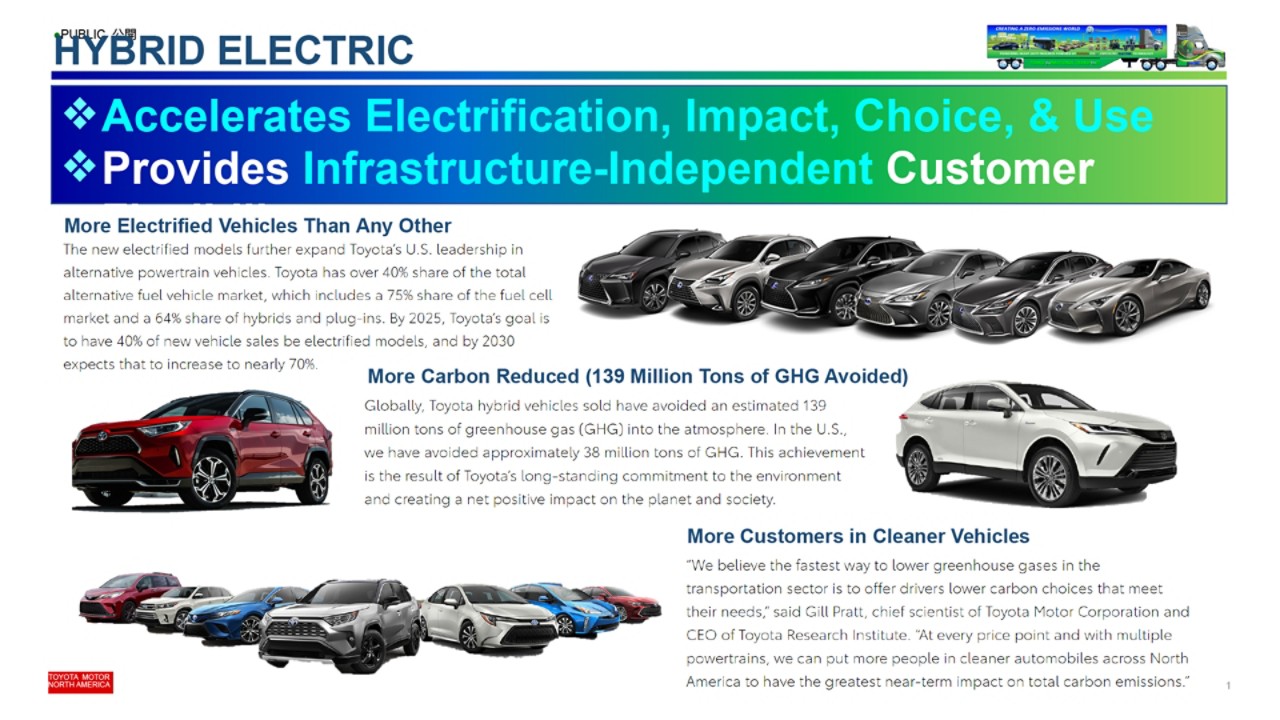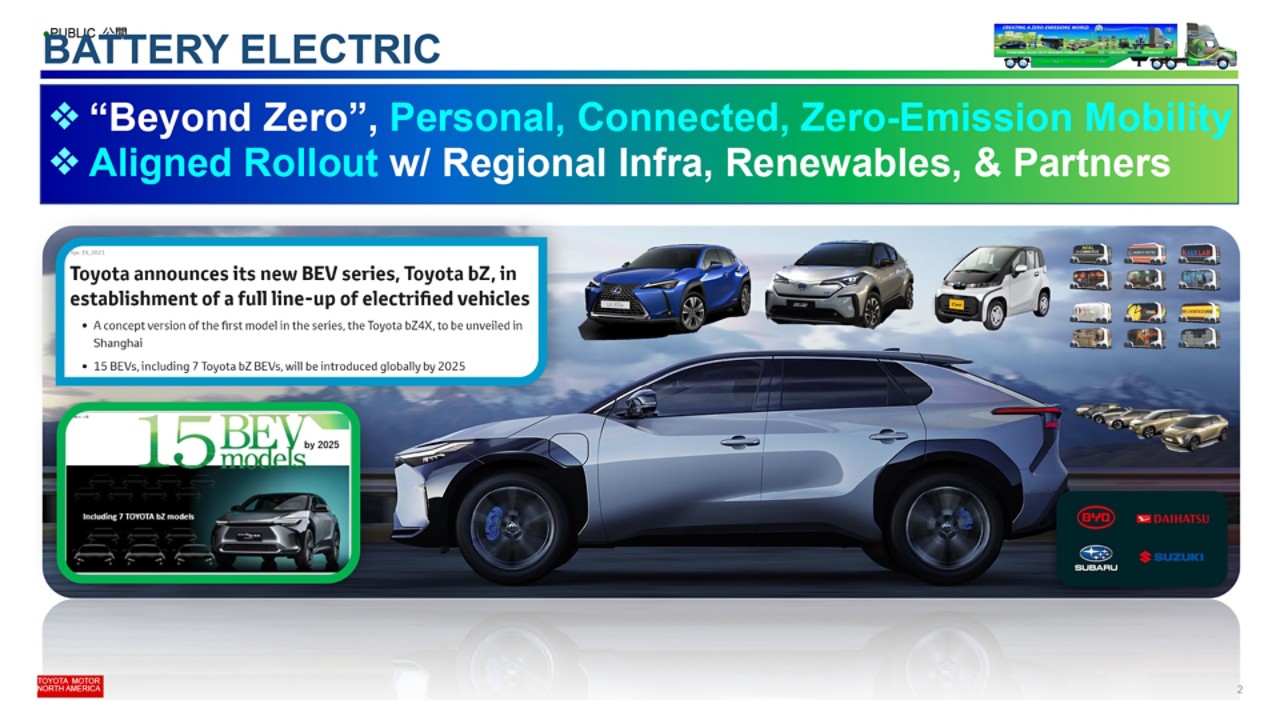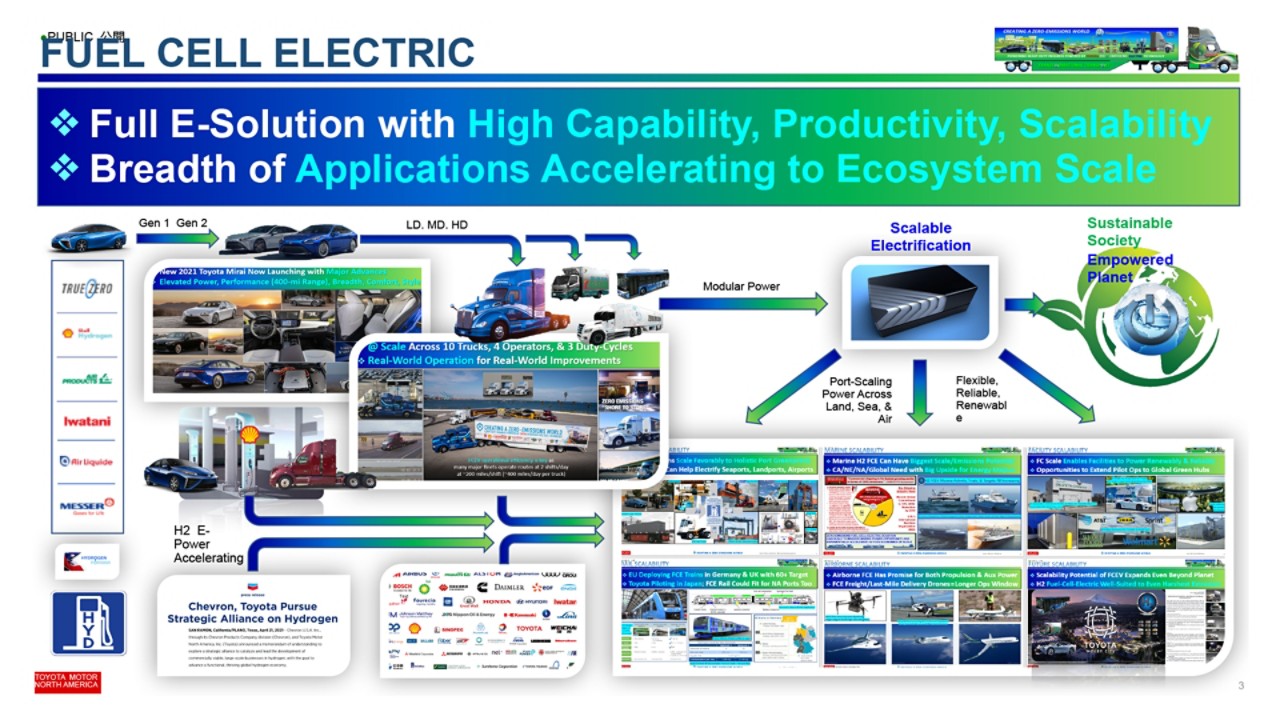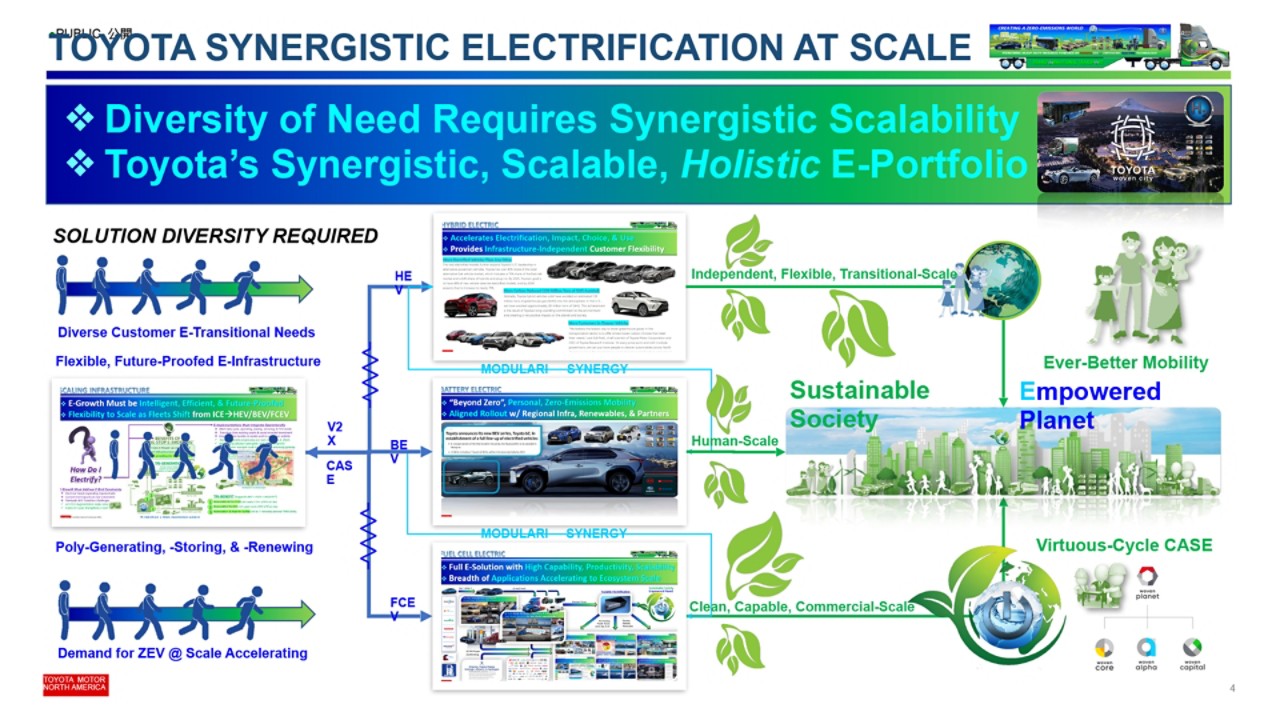Electric Avenue
The electrification of the automobile is arguably the greatest force transforming our industry. Appearing as early as the 1800’s, electricity has served us increasingly well across the automotive spectrum, giving rise to continuous advances in lighting, ignition, communications, processing, propelling, regenerating, all manner of efficiencies, and more. Today, electricity—along with the connectivity and autonomy that it enables—is powering the industry‘s transformation towards a new paradigm of sustainable mobility for all.
So, electrification is with us, it’s pervasive, and it’s transformative. It’s also a core strength of what we do at Toyota. In fact, we possess the world’s largest lineup of electrified vehicles—globally selling more than 2 million a year—spanning 55 models across our synergistic hybrid electric, battery electric, and fuel cell electric technology portfolios.
As illustrated in Figure 1, we’ve made hybrid electric and its carbon-reduction impact mainstream, leading the market, with more efficiency, more savings, and more choice for customers, resulting in more people in cleaner vehicles traveling more cleaner miles. More than 139 million tons of greenhouse gas have been avoided. Today, our electrified Lexus lineup alone has cumulatively contributed to 19 million tons of CO₂ reduction—the equivalent of the combined CO₂ output of roughly 300,000 passenger cars each year, for the past 15 years. And now we’re exponentially accelerating that carbon-reduction scale with fast-selling hybrids like the new Venza, Sienna and the versatile RAV4 plug-in, with more than 40 miles of pure electric range enabling complete zero-emissions coverage of the average daily customer commute.

Figure 1 – Toyota Hybrid Electric
Our zero-emissions coverage is accelerating, with our existing battery electrics like the UX and CH-R SUVs to be joined in the coming year by the beautiful bZ4X you see below in Figure 2, with six more of its bZ battery electric brothers close behind, and a total of 15 BEVs across the next 45 months. This exciting rollout is in strategic alignment with supporting infrastructure, renewable pathways, and global volume amplifying partners like Subaru, Suzuki, Daihatsu, and BYD.

Figure 2 – Toyota Battery Electric
Our similarly synergistic expansion into commercial-scale fuel cell electrification (see Figure 3) is arguably even more exciting, given the enormous global need to electrify transport, goods movement, and power generation, and hydrogen fuel cell electric’s unique ability to scale as a flexible, resilient, sustainable zero-emissions solution to the world’s biggest, hardest-to-abate powerplants, where size, synergy, durability, productivity, throughput, and operational uptime—all Toyota hallmarks—are paramount, and batteries alone fall short.

Figure 3 – Toyota Fuel Cell Electric
When viewed holistically, as in Figure 4, electrified advancement at synergistic scale is something we at Toyota can uniquely provide, and that’s an enormously valuable asset and ability that matches the full magnitude of market need. On the left, you see the retail and commercial customer progression, and their accelerating need for greener solution diversity based on their own increasingly diverse greener mobility and operational needs. That solution set requires flexible, future-proofed e-infrastructure, amortized across poly-generating, -storing, and -renewing assets. With V2X and CASE integrations spanning synergistic portfolio offerings of the complementary hybrid, battery, and fuel cell electric solution sets you see centered here. All of which enables flexible, transitional scale. Human scale. And clean, capable, commercial-scale. Ever-better mobility, power generation, and virtuous-cycle CASE. For sustainable society. And an empowered planet.




